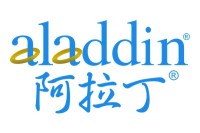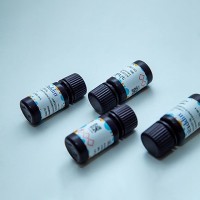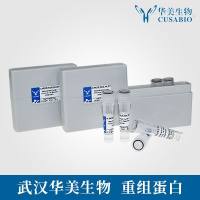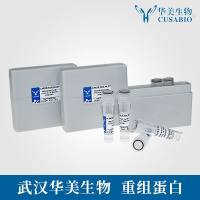Access RT-PCR System{英文}
丁香园论坛
1431
Technically Speaking
Access RT-PCR System
By Patrick Burke
Promega Corporation
Transcription of RNA from DNA is the principal step in executing a cell's genetic program. Numerous techniques have been developed to investigate gene expression at the level of transcription, including Northern blot hybridization, RNase protection and reverse transcription coupled with polymerase chain reaction amplification (RT-PCR). RT-PCR is a sensitive and versatile method which can be used to determine the presence of a transcript, to estimate expression levels and to clone cDNA products without the necessity of constructing and screening a cDNA library. Promega's Access RT-PCR System(a) provides a convenient, single-tube, two-enzyme method for generating a cDNA product from an RNA sample.
(a)PCR is a patented process. Promega does not encourage or support the unauthorized or unlicensed use of the PCR process. Use of this system is recommended for persons that either have a license to perform PCR or are not required to obtain a license.
Q: What is the Access RT-PCR System?
The Promega Access RT-PCR System is designed for the coupled reverse transcription (RT) and polymerase chain reaction (PCR) amplification of a specific target RNA from either total RNA or mRNA. This single-tube, two-enzyme system provides sensitive, quick and reproducible analysis of even rare RNAs. The system uses Reverse Transcriptase from Avian Myeloblastosis Virus (AMV RT) for first strand cDNA synthesis, and the thermostable Tfl DNA Polymerase(b) from Thermus flavus for second strand cDNA synthesis and DNA amplification. Briefly, the sample RNA, dNTPs, Reaction Buffer, MgSO4, AMV RT, Tfl DNA Polymerase, and primers for both reverse transcription and amplification are assembled in a single tube. Reverse transcription is performed at 37-48°C for 20-45 minutes. Following inactivation of the AMV RT and denaturation of the RNA/cDNA hybrid by incubation at 94°C for 2 minutes, amplification is performed using standard cycling parameters.
Q: What conditions may require optimization when using the Access RT-PCR System?
There are several parameters which may be optimized for a particular primer-target combination including: MgSO4 concentration, reverse transcription temperature, primer annealing temperature and number of amplification cycles.
The magnesium requirement of both the AMV Reverse Transcriptase and the Tfl DNA Polymerase in the Access RT-PCR System reaction is affected by the final concentration of nucleotides, oligonucleotide primers and template. We recommend that MgSO4 concentrations from 1-3mM (in 0.5mM increments) be tested initially to determine the optimal concentration.
The AMV RT is active in the AMV/Tfl Reaction Buffer from 37-48°C. To minimize secondary structure during reverse transcription, incubation at 48°C is recommended. However, the Tm of the primer for reverse transcription may be lower than 48°C; the reaction temperature for the reverse transcription reaction would then require optimization.
For primers with a high Tm, it may be advantageous to increase the suggested annealing temperature for amplification. The higher temperature minimizes nonspecific primer annealing, thereby increasing the amount of specific product produced.
Most RNA targets can be detected following 35 cycles of PCR amplification. However, if the target is rare or if only a small amount of starting material is available, it may be necessary to increase the number of cycles to 45 or 50.
Q: What advantages does the Access RT-PCR System have compared to commonly used methods?
The Access RT-PCR System reactions are performed in a single tube without secondary additions to the reaction mix. This decreases hands-on time, relative to other commonly used two-enzyme methods (e.g., Moloney Murine Leukemia Virus Reverse Transcriptase (MMLV RT) and Taq DNA Polymerase(b)), and minimizes the likelihood of introducing contaminants into the reaction. Furthermore, this two-enzyme system is more sensitive than a single-enzyme, rTth DNA polymerase(b)-based system for amplification of a target in a total RNA preparation (1-4).
(b)Some applications in which this product may be used are covered by patents issued and applicable in certain countries. Because purchase of this product does not include a license to perform any patented application, users of the product may be required to obtain a patent license depending upon the particular application and country in which the product is used. For more specific information, please contact Promega.
Q: Can total RNA be used as template or is poly(A)+ RNA required?
The target RNA template may be a total RNA preparation, a poly(A)+ population or an in vitro transcribed RNA. Successful reverse transcription is dependent on the integrity and purity of the RNA used as a template. Regardless of the type of RNA used, it is critical that an RNase-free environment be maintained during RNA isolation. Promega's RNAgents® Total RNA Isolation System and PolyATtract® mRNA Isolation Systems yield sample which is sufficiently pure for use in the Access RT-PCR System. Additionally, care should be taken to minimize the amount of DNA present in the RNA preparation. Treatment of RNA samples with RNase-Free DNase I, such as Promega's RQ1 RNase-Free DNase, is recommended for RNA samples which may contain DNA.
Q: How can DNase I be removed from an RNA sample prior to RT-PCR?
If DNase I treatment is necessary, the amount of enzyme should be kept low (<1unit/µg RNA) to minimize carry-over. DNase I, including RQ1 RNase-Free DNase, is not efficiently denatured by simple heating of the sample. To ensure DNase I is removed, phenol extraction followed by precipitation of the sample is recommended. However, the fraction of the sample lost during extraction and precipitation may be unacceptable. As an alternative, a DNase I-treated sample may be heated in RT-PCR reaction buffer (e.g., AMV/Tfl Reaction Buffer) at 95°C for 10 minutes. This has been reported to significantly reduce DNase I activity (5; G. Kobs, unpublished observations). This treatment does not result in complete inactivation of DNase I and may be inappropriate for particularly rare transcripts.
Q: How much sample RNA is required for the Access RT-PCR System?
The minimum amount of RNA that can be amplified using the Access RT-PCR System is both template and primer dependent. For the Positive Control RNA provided (an in vitro transcript), the minimum amount of RNA required is <103 molecules (2.5 x 1021 moles). Excellent amplification results can generally be obtained using total RNA template levels in the range of 1pg-1µg per reaction or poly(A)+ RNA template levels in the range of 1-10ng.
Q: Can random primers or oligo(dT) be used for reverse transcription?
Nonspecific primers such as random primers (e.g., hexamers) or oligo(dT) can be used for reverse transcription of the sample RNA. These primers have melting temperatures which are lower than the annealing temperature generally used for the sequence-specific primers and, therefore, cannot act as primers for chain elongation during the amplification. If short nonspecific primers are used for reverse transcription, a 10 minute incubation at room temperature should be included before proceeding with reverse transcription at a higher temperature.
Q: Can fragments amplified using Tfl DNA Polymerase be cloned using pGEM®(c)-T, pGEM®-T Easy or pTARGETTM Vectors?
The Tfl DNA Polymerase does not include a 3´-->5´ exonuclease ("proofreading") activity and will add a 3´ terminal adenosine residue in a nontemplate-dependent manner. Therefore, cDNAs synthesized using the Access RT-PCR System can be cloned using the pGEM®-T, pGEM®-T Easy and pTARGETTM Vector Systems.
(c)U.S. Pat. No. 4,766,072 has been issued to Promega Corporation for transcription vectors having two different bacteriophage RNA polymerase promoter sequences separated by a series of unique restriction sites into which foreign DNA can be inserted.
Q: What is the longest fragment that has been amplified using the Access RT-PCR System?
A 3.9kb fragment of the dystrophin RNA has been amplified out of total RNA isolated from human skeletal muscle using the Access RT-PCR System (6). Large targets, however, may be problematic to generate and the reactions must be optimized.
Q: What is the fidelity of Tfl DNA Polymerase? What is the error rate of AMV RT?
The rate of misincorporation for Tfl DNA Polymerase has been reported as 1.03 x 104 errors/base (7), which compares to 8.9 x 105 to 1.1 x 104 errors/base reported for Taq DNA Polymerase (8,9). The error rate of AMV RT, as well as MMLV RT, has been reported as approximately 3.0 x 105 errors/base (10).
Q: Can MgCl2 be substituted for the MgSO4 provided with the system?
MgCl2 should not be substituted for the MgSO4 provided. Tfl DNA Polymerase exhibits greatly enhanced performance using MgSO4 and the AMV/Tfl 5X Reaction Buffer under the suggested assay conditions.
Q: Will additives such as DMSO or formamide adversely affect the RT-PCR reaction?
Additives such as DMSO or formamide are often added to improve amplification of G+C-rich templates or targets with strong secondary structure (11). DMSO at a final concentration of 10% or deionized formamide to a final concentration of 2% has no adverse affect on the Access RT-PCR reaction using the Control RNA (G. Kobs, unpublished observations).
References
Miller, K. and Storts, D.R. (1995) Promega Notes 53, 2.
Cusi, M.G. et al. (1994) BioTechniques 17, 1035.
Easton, L.A. et al. (1994) J. Virol. Methods 50, 343.
Brooks, E. et al. (1995) BioTechniques 19, 806.
Huang, Z., Fasco, M.J. and Kaminsky, L.S. (1996) BioTechniques 20, 1012.
Miller, K. and Storts, D.R. (1996) J. NIH Res. 8, 48.
Mantilla, P. et al. (1988) Biochemistry 27, 6008.
Cariello, N.F., Swenberg, J.A. and Skopek, T.R. (1991) Nucl. Acids Res. 19, 4193.
Barnes, W.M. (1992) Gene 112, 29.
Roberts, J.D. et al. (1989) Mol. Cell. Biol. 9, 469.
Varadaraj, K. and Skinner D.M. (1994) Gene 140, 1.
-------------------------------------------------------------
© 1996 Promega Corporation. All Rights Reserved.
pGEM, PolyATtract and RNAgents are trademarks of Promega Corporation and are registered with the U.S. Patent and Trademark Office.
pTARGET is a trademark of Promega Corporation.
Access RT-PCR System
By Patrick Burke
Promega Corporation
Transcription of RNA from DNA is the principal step in executing a cell's genetic program. Numerous techniques have been developed to investigate gene expression at the level of transcription, including Northern blot hybridization, RNase protection and reverse transcription coupled with polymerase chain reaction amplification (RT-PCR). RT-PCR is a sensitive and versatile method which can be used to determine the presence of a transcript, to estimate expression levels and to clone cDNA products without the necessity of constructing and screening a cDNA library. Promega's Access RT-PCR System(a) provides a convenient, single-tube, two-enzyme method for generating a cDNA product from an RNA sample.
(a)PCR is a patented process. Promega does not encourage or support the unauthorized or unlicensed use of the PCR process. Use of this system is recommended for persons that either have a license to perform PCR or are not required to obtain a license.
Q: What is the Access RT-PCR System?
The Promega Access RT-PCR System is designed for the coupled reverse transcription (RT) and polymerase chain reaction (PCR) amplification of a specific target RNA from either total RNA or mRNA. This single-tube, two-enzyme system provides sensitive, quick and reproducible analysis of even rare RNAs. The system uses Reverse Transcriptase from Avian Myeloblastosis Virus (AMV RT) for first strand cDNA synthesis, and the thermostable Tfl DNA Polymerase(b) from Thermus flavus for second strand cDNA synthesis and DNA amplification. Briefly, the sample RNA, dNTPs, Reaction Buffer, MgSO4, AMV RT, Tfl DNA Polymerase, and primers for both reverse transcription and amplification are assembled in a single tube. Reverse transcription is performed at 37-48°C for 20-45 minutes. Following inactivation of the AMV RT and denaturation of the RNA/cDNA hybrid by incubation at 94°C for 2 minutes, amplification is performed using standard cycling parameters.
Q: What conditions may require optimization when using the Access RT-PCR System?
There are several parameters which may be optimized for a particular primer-target combination including: MgSO4 concentration, reverse transcription temperature, primer annealing temperature and number of amplification cycles.
The magnesium requirement of both the AMV Reverse Transcriptase and the Tfl DNA Polymerase in the Access RT-PCR System reaction is affected by the final concentration of nucleotides, oligonucleotide primers and template. We recommend that MgSO4 concentrations from 1-3mM (in 0.5mM increments) be tested initially to determine the optimal concentration.
The AMV RT is active in the AMV/Tfl Reaction Buffer from 37-48°C. To minimize secondary structure during reverse transcription, incubation at 48°C is recommended. However, the Tm of the primer for reverse transcription may be lower than 48°C; the reaction temperature for the reverse transcription reaction would then require optimization.
For primers with a high Tm, it may be advantageous to increase the suggested annealing temperature for amplification. The higher temperature minimizes nonspecific primer annealing, thereby increasing the amount of specific product produced.
Most RNA targets can be detected following 35 cycles of PCR amplification. However, if the target is rare or if only a small amount of starting material is available, it may be necessary to increase the number of cycles to 45 or 50.
Q: What advantages does the Access RT-PCR System have compared to commonly used methods?
The Access RT-PCR System reactions are performed in a single tube without secondary additions to the reaction mix. This decreases hands-on time, relative to other commonly used two-enzyme methods (e.g., Moloney Murine Leukemia Virus Reverse Transcriptase (MMLV RT) and Taq DNA Polymerase(b)), and minimizes the likelihood of introducing contaminants into the reaction. Furthermore, this two-enzyme system is more sensitive than a single-enzyme, rTth DNA polymerase(b)-based system for amplification of a target in a total RNA preparation (1-4).
(b)Some applications in which this product may be used are covered by patents issued and applicable in certain countries. Because purchase of this product does not include a license to perform any patented application, users of the product may be required to obtain a patent license depending upon the particular application and country in which the product is used. For more specific information, please contact Promega.
Q: Can total RNA be used as template or is poly(A)+ RNA required?
The target RNA template may be a total RNA preparation, a poly(A)+ population or an in vitro transcribed RNA. Successful reverse transcription is dependent on the integrity and purity of the RNA used as a template. Regardless of the type of RNA used, it is critical that an RNase-free environment be maintained during RNA isolation. Promega's RNAgents® Total RNA Isolation System and PolyATtract® mRNA Isolation Systems yield sample which is sufficiently pure for use in the Access RT-PCR System. Additionally, care should be taken to minimize the amount of DNA present in the RNA preparation. Treatment of RNA samples with RNase-Free DNase I, such as Promega's RQ1 RNase-Free DNase, is recommended for RNA samples which may contain DNA.
Q: How can DNase I be removed from an RNA sample prior to RT-PCR?
If DNase I treatment is necessary, the amount of enzyme should be kept low (<1unit/µg RNA) to minimize carry-over. DNase I, including RQ1 RNase-Free DNase, is not efficiently denatured by simple heating of the sample. To ensure DNase I is removed, phenol extraction followed by precipitation of the sample is recommended. However, the fraction of the sample lost during extraction and precipitation may be unacceptable. As an alternative, a DNase I-treated sample may be heated in RT-PCR reaction buffer (e.g., AMV/Tfl Reaction Buffer) at 95°C for 10 minutes. This has been reported to significantly reduce DNase I activity (5; G. Kobs, unpublished observations). This treatment does not result in complete inactivation of DNase I and may be inappropriate for particularly rare transcripts.
Q: How much sample RNA is required for the Access RT-PCR System?
The minimum amount of RNA that can be amplified using the Access RT-PCR System is both template and primer dependent. For the Positive Control RNA provided (an in vitro transcript), the minimum amount of RNA required is <103 molecules (2.5 x 1021 moles). Excellent amplification results can generally be obtained using total RNA template levels in the range of 1pg-1µg per reaction or poly(A)+ RNA template levels in the range of 1-10ng.
Q: Can random primers or oligo(dT) be used for reverse transcription?
Nonspecific primers such as random primers (e.g., hexamers) or oligo(dT) can be used for reverse transcription of the sample RNA. These primers have melting temperatures which are lower than the annealing temperature generally used for the sequence-specific primers and, therefore, cannot act as primers for chain elongation during the amplification. If short nonspecific primers are used for reverse transcription, a 10 minute incubation at room temperature should be included before proceeding with reverse transcription at a higher temperature.
Q: Can fragments amplified using Tfl DNA Polymerase be cloned using pGEM®(c)-T, pGEM®-T Easy or pTARGETTM Vectors?
The Tfl DNA Polymerase does not include a 3´-->5´ exonuclease ("proofreading") activity and will add a 3´ terminal adenosine residue in a nontemplate-dependent manner. Therefore, cDNAs synthesized using the Access RT-PCR System can be cloned using the pGEM®-T, pGEM®-T Easy and pTARGETTM Vector Systems.
(c)U.S. Pat. No. 4,766,072 has been issued to Promega Corporation for transcription vectors having two different bacteriophage RNA polymerase promoter sequences separated by a series of unique restriction sites into which foreign DNA can be inserted.
Q: What is the longest fragment that has been amplified using the Access RT-PCR System?
A 3.9kb fragment of the dystrophin RNA has been amplified out of total RNA isolated from human skeletal muscle using the Access RT-PCR System (6). Large targets, however, may be problematic to generate and the reactions must be optimized.
Q: What is the fidelity of Tfl DNA Polymerase? What is the error rate of AMV RT?
The rate of misincorporation for Tfl DNA Polymerase has been reported as 1.03 x 104 errors/base (7), which compares to 8.9 x 105 to 1.1 x 104 errors/base reported for Taq DNA Polymerase (8,9). The error rate of AMV RT, as well as MMLV RT, has been reported as approximately 3.0 x 105 errors/base (10).
Q: Can MgCl2 be substituted for the MgSO4 provided with the system?
MgCl2 should not be substituted for the MgSO4 provided. Tfl DNA Polymerase exhibits greatly enhanced performance using MgSO4 and the AMV/Tfl 5X Reaction Buffer under the suggested assay conditions.
Q: Will additives such as DMSO or formamide adversely affect the RT-PCR reaction?
Additives such as DMSO or formamide are often added to improve amplification of G+C-rich templates or targets with strong secondary structure (11). DMSO at a final concentration of 10% or deionized formamide to a final concentration of 2% has no adverse affect on the Access RT-PCR reaction using the Control RNA (G. Kobs, unpublished observations).
References
Miller, K. and Storts, D.R. (1995) Promega Notes 53, 2.
Cusi, M.G. et al. (1994) BioTechniques 17, 1035.
Easton, L.A. et al. (1994) J. Virol. Methods 50, 343.
Brooks, E. et al. (1995) BioTechniques 19, 806.
Huang, Z., Fasco, M.J. and Kaminsky, L.S. (1996) BioTechniques 20, 1012.
Miller, K. and Storts, D.R. (1996) J. NIH Res. 8, 48.
Mantilla, P. et al. (1988) Biochemistry 27, 6008.
Cariello, N.F., Swenberg, J.A. and Skopek, T.R. (1991) Nucl. Acids Res. 19, 4193.
Barnes, W.M. (1992) Gene 112, 29.
Roberts, J.D. et al. (1989) Mol. Cell. Biol. 9, 469.
Varadaraj, K. and Skinner D.M. (1994) Gene 140, 1.
-------------------------------------------------------------
© 1996 Promega Corporation. All Rights Reserved.
pGEM, PolyATtract and RNAgents are trademarks of Promega Corporation and are registered with the U.S. Patent and Trademark Office.
pTARGET is a trademark of Promega Corporation.







